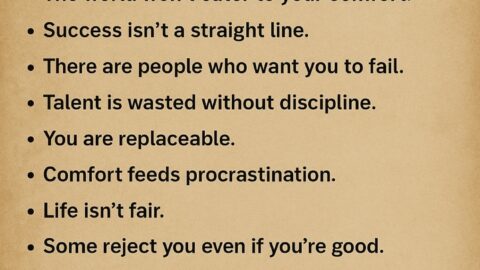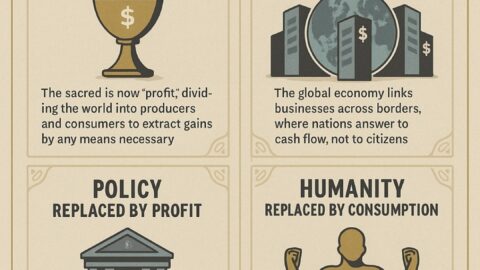Introduction: A Framework of Rise and Decline
Capitalism, as an economic system, is not static. It evolves through identifiable stages, each marked by shifts in production, governance, culture, and morality. To fully understand this evolution, we can align its phases with the Tytler Cycle—a theory proposed by Scottish historian Alexander Fraser Tytler, which describes the stages a society passes through from bondage to freedom and back again. As capitalism matures and mutates, it often follows the same cyclical fate: virtue gives rise to abundance, which gives rise to selfishness, apathy, and eventual collapse.

I. The Tytler Cycle: A Moral-Political Arc of Civilizations
Tytler’s Cycle of Civilization:
- Bondage →
- Spiritual Faith →
- Courage →
- Liberty →
- Abundance →
- Selfishness →
- Complacency →
- Apathy →
- Dependence →
- Back to Bondage
Each phase has moral and economic characteristics. As we trace capitalism’s development, we’ll overlay it with the Tytler Cycle to see how economic systems mirror moral decay or renewal.
II. Stages and Forms of Capitalism in Relation to the Tytler Cycle
1. Proto-Capitalism (Mercantile Capitalism)
- Timeframe: ~16th to 18th Century
- Tytler Stage: Courage → Liberty
- Form: Mercantilism
- Key Features:
- State-backed trade monopolies (e.g., East India Companies)
- Accumulation of gold/silver (bullionism)
- Birth of entrepreneurial class
- Colonization as economic strategy
- Effect: Birthed national economies and early bourgeoisie but relied on state coercion and exploitation abroad.
Critique: Although called “capitalist,” it leaned heavily on state intervention, not market freedom.
2. Classical Capitalism (Liberal Capitalism)
- Timeframe: ~1776–1870s (Adam Smith era onward)
- Tytler Stage: Liberty → Abundance
- Form: Laissez-Faire Capitalism
- Key Features:
- Minimal government interference
- Strong emphasis on free markets and individual rights
- Entrepreneurial innovation and industrialization
- Rise of middle class and civil liberties
Outcome: Rapid expansion of wealth, technology, and global trade—but also harsh working conditions and inequality.
Moral Note: Liberty flourished—but was increasingly traded for comfort and wealth. This is the turning point toward moral decline in the Tytler Cycle.
3. Industrial Capitalism (Monopolistic Capitalism)
- Timeframe: ~1870s–1930s
- Tytler Stage: Abundance → Selfishness
- Form: Corporate/Industrial Capitalism
- Key Features:
- Emergence of monopolies and trusts (e.g., Standard Oil)
- Urbanization, mass production, and labor exploitation
- Rise of oligarchs and captains of industry
- Birth of consumer culture
Outcome: Profits concentrated in the hands of the few. Inequality deepened. Reform movements and socialism emerged in response.
Moral Shift: Society becomes self-serving, materialistic, and increasingly blind to justice—typical of the Selfishness phase in Tytler’s cycle.
4. Keynesian Capitalism (Welfare Capitalism)
- Timeframe: ~1945–1970s
- Tytler Stage: Selfishness → Complacency
- Form: State-Regulated Mixed Economy
- Key Features:
- Strong state intervention in markets
- Welfare systems and safety nets
- High union membership and shared prosperity
- Emphasis on consumer spending as economic engine
Outcome: Temporary stabilization—but citizens began demanding more from the state, becoming dependent on government provisions.
Moral Impact: Citizens lost the entrepreneurial and sacrificial spirit that once defined the liberty stage. Entitlement culture emerged.
5. Neoliberal Capitalism (Financial Capitalism / Global Capitalism)
- Timeframe: ~1980s–2008
- Tytler Stage: Complacency → Apathy → Dependence
- Form: Global Deregulated Capitalism
- Key Features:
- Deregulation of markets and finance
- Outsourcing and deindustrialization
- Expansion of multinational corporations
- Rise of debt economies and mass consumerism
Outcome: Governments began serving corporate interests. Citizens became consumers, not civic participants. Societies grew passive and uninformed, sedated by comfort and credit.
“People began trading liberty for convenience and identity for materialism.”
6. Crony Capitalism (Plutocratic Capitalism)
- Timeframe: ~2008–present
- Tytler Stage: Dependence → Bondage
- Form: Technocratic-Plutocratic Oligarchy
- Key Features:
- Bailouts for the rich, austerity for the public
- Big Tech–State surveillance partnerships
- Financial speculation replaces productive enterprise
- Censorship, media manipulation, and digital servitude
Outcome: Citizens are dependent on systems they no longer control or understand. Sovereignty, liberty, and truth are eroded.
Moral Collapse: As virtue vanishes, people become passive dependents—ripe for tyranny.
III. Globalism: The Final Stage of Capitalist Mutation
Many thinkers (including Sir James Goldsmith) warned of the final stage—where capitalism ceases to serve nations or citizens, becoming a tool of transnational elites:
- Globalism detaches capitalism from virtue
- Citizens become debt-serfs and digital products
- Local cultures and values are sacrificed to homogenized consumerism
“When corporations have no nation, and men have no God, freedom becomes a forgotten myth.”
IV. Can the Cycle Be Broken? A Return to Virtue
The Tytler Cycle is not a prophecy—it’s a pattern. It can be interrupted, but only if:
- Citizens rediscover spiritual faith and courage
- Capitalism is re-anchored in virtue, localism, and real value
- Governments serve the people, not corporate masters
- Moral education replaces ideological indoctrination
Conclusion: From Freedom to Bondage—and Back Again?
Capitalism began as a tool of liberty and self-reliance. Over centuries, it mutated into a global machine of consumption, debt, and domination—mirroring the moral arc of the Tytler Cycle.
Yet within the ashes of bondage lies the seed of renewal. History is not a straight line—it is a moral spiral. If citizens regain virtue and courage, capitalism can be reformed and liberty restored.
Question remains: Will we choose sacrifice and principle—or continue trading freedom for comfort, until all is lost?






